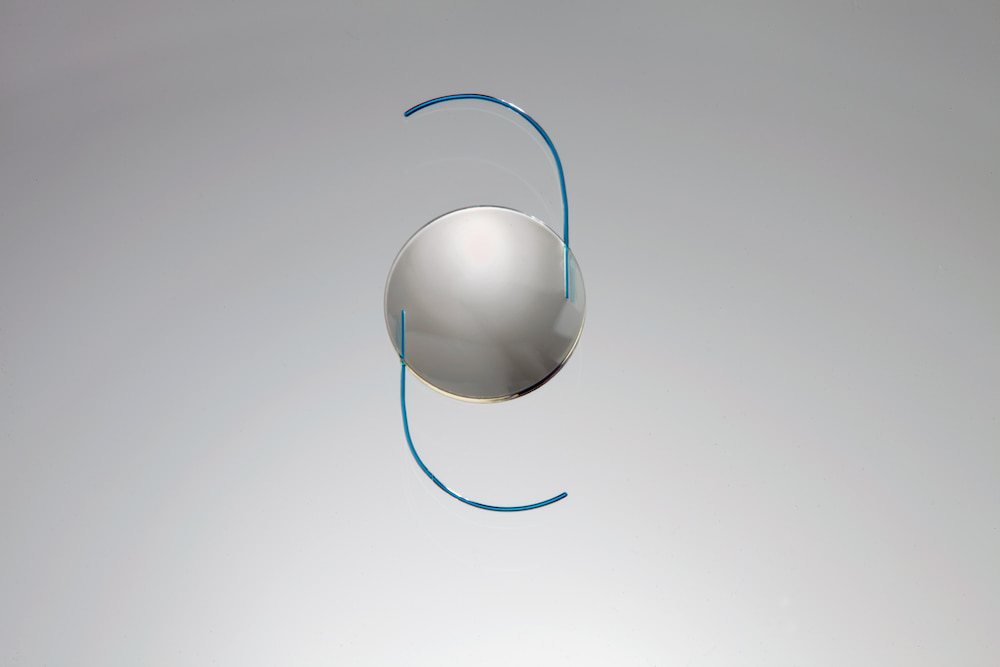Pros and Cons of Light Adjustable Lens
The Light Adjustable Lens (LAL) by RxSight is a lens that has the unique ability to be customized after cataract surgery. Normally laser cataract surgery patients have the ability to pick if they want to see far away, up close, or both far away and up close without glasses.
In some patients, it’s not so straightforward. Some patients do not know if they would prefer to see at distance or up close and would prefer to decide after cataract surgery with a simulation to choose which distance they prefer. Other patients have a history of eye surgery which tends to make the exact lens power needed for cataract surgery more difficult to calculate. For these two situations and others, the light adjustable lens could be an option.
The lens consists of photosensitive material that has the ability to change shape when exposed to ultraviolet light. Once the patient has healed from cataract surgery, which ranges from 2-to 6 weeks, doctors can then use a special light that allows them to change the power of the lens so that it is customized to your vision needs.
Everything have been terrific, fantastic. The service is incredible. They take extra care of you. We completely recommend to friends, families, everyone! My husband and I both had cataract surgery here.
Noemí
This lens is a great option for anyone who loves the idea of being able to customize their vision after cataract surgery. The light adjustable lens gives you an opportunity to experience your vision between treatments and determine if you want to make any adjustments to the lens.
For example, a recent patient we had was interested in blended vision after cataract surgery where she would use one eye to see at distance and one eye would be blended to see near. However, she had not tried this before and was not sure how her brain would adapt. With this new technology, she was able to test out her vision. In fact, she was able to change which eye she wanted for distance and which eye she wanted for near!

As we discussed before, this lens is also an excellent choice for patients who have already had refractive procedures such as LASIK, PRK, or radial keratotomy (RK). Even with the latest technology available, lens power calculations can be more unpredictable in these eyes. Some doctors spend their entire lives trying to come up with the best formula to calculate the lens power needed for cataract surgery. Typically these patients love the light adjustable lens because they are able to fine-tune their vision to reduce their dependency on glasses. Finally, there are some patients who are not good candidates for laser vision correction. In this case, any fine-tuning needed after surgery can be done with light adjustments!

If UV can change the lens power, should I be wearing sunglasses? You will be provided with special UV- blocking glasses, a dark pair to wear during daylight hours outside, and a clear pair to wear while indoors in any sun-drenched room. The lens now has an active shield on the front of the lens. Active Shield protects the lens from UV light, making it less susceptible to uncontrolled changes from UV light. You may ask, “if an active shield blocks the lens from UV light, how do the doctors adjust the lens?” The doctors use a light delivery device that uses a special light to temporarily remove the active shield from the main part of the lens. This allows the doctors to adjust the lens with the delivery device, but not allow UV light from the outside environment to adjust the lens.

No. This material is made of polymers and once the UV light interacts with the polymers they can no longer be changed. There are enough polymers in the lens to have 3 adjustments, however, we typically average 2 light treatments per person.
Once the last treatment is done and your vision is where we want it to be, we do a series of 2 lock-ins. These lock-ins use the light delivery device to make sure we have used all the polymers to ensure your vision stays where we want it to be.
Want to learn more? Take a closer in-depth look at light adjustable lenses from Dr. Arendt’s perspective.

Request a consultation to get started!
"*" indicates required fields